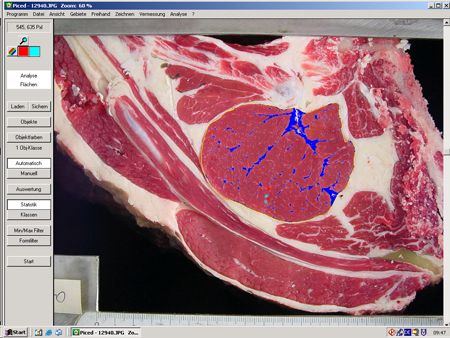In Austria there are different beef quality programs, some of which are offered by the food retail chains (Spar, REWE (Billa, Merkur), Plus) and some of which are only available regionally (e.g. Wienerwald Weiderind, Kärntner Weidekalbin). In Austrian branded meat programs, the special properties of the meat (e.g. tenderness, juiciness, taste, grilling properties) are always emphasized. There are a limited number of scientifically based studies that prove the difference between the individual branded meat programs (and therefore also production systems) for Germany and Switzerland, but not for Austria.
As part of this project, a total of 55 meat samples will be taken from the following five beef quality programs
(Yes Of Course! Young Beef, ALMO, Quality Fattened Calf, AMA Quality Seal Young Bull, Organic Ox).
The meat samples are examined for the following quality parameters:
- Color
- Marbling
- Water Connectivity
- shear force (tenderness)
- Ingredients
- sensory properties
- fatty acids
The samples for each quality program are randomly taken on one day from each large cutting plant. To examine the quality parameters listed below, a 14 cm thick meat sample from the roast is required.
The fatty acid composition of foods is currently a hotly debated topic. The aim of the present project is to clarify how high the proportion of nutritionally valuable fatty acids is in Austrian beef and to what extent the proportions are influenced by different production systems/feeding regimes.
The present project is of interest to both intensive and extensive cattle fatteners as well as to farms that keep suckler cows. The results of the project are also particularly interesting for farmers with direct marketing and for regional butchers. The project also provides consumers with information about the meat quality of different Austrian beef quality programs.
Further information on project management can be found in the database for research and sustainable development (Dafne) -> Link







